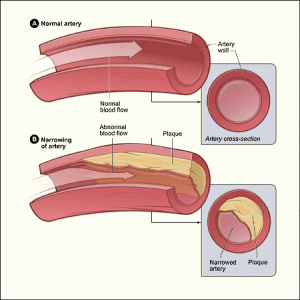A Royal Pain in the Chest: Prince Philip Stented to Treat CAD

Just as royal-watchers were getting ready to clamor about Kate’s first Christmas as a royal, a health scare for Prince Philip threatened to put a damper on the festivities.
The 90-year old was hospitalized yesterday after complaining of chest pain. He was taken by helicopter to the UK’s largest cardiothoracic hospital, Papworth Hospital in Cambridge. There, he underwent a procedure called a coronary stent.
In a statement from Buckingham Palace, spokeswoman Ailsa Anderson said:
The Duke of Edinburgh had a good night and is in good spirits but he is eager to leave… Sunday’s church service is going ahead as planned and we don’t anticipate changes to the Royal Family’s Christmas celebrations.
The Duke has already been visited by Queen Elizabeth and their children Edward, Andrew and Anne.
Getting to the Heart of the Matter
 Coronary artery disease (CAD) is the most common kind of heart disease. It is the leading cause of death in the United States.
Coronary artery disease (CAD) is the most common kind of heart disease. It is the leading cause of death in the United States.
It occurs when the blood vessels that supply blood to the heart muscle itself (the coronary arteries) become narrowed by a build up of plaque. Plaque is made up of cholesterol, fat, calcium and other substances from the blood.
Narrowing of the arteries leads to a decrease in blood supply to the heart muscle. This can lead to the symptoms of chest pain (angina) or even heart attack if the narrowing is severe enough, or if part of the plaque breaks off and blocks a smaller part of the artery.
What is Coronary Angioplasty and Coronary Stent?
In a coronary artery bypass, surgeons connect a blood vessel (taken from elsewhere in the body) to either side of a blocked artery to allow blood to flow freely again.
With an angioplasty, a catheter is inserted into the large artery in the groin, and is threaded up into the coronary arteries. The catheter has a small balloon on its tip. The balloon is inflated at the blockage site in the artery to flatten the plaque against the artery wall. After treatment, the guide wire, catheter, and balloon are removed. The hospital stay and recovery time for angioplasty is shorter than that of bypass. But about 35% of patients are at risk for more blockages in the treated area.
A stent procedure is frequently used along with balloon angioplasty. This involves placing a mesh-like metal device into an artery at a site narrowed by plaque. The stent is mounted onto the balloon-tipped catheter, threaded through an artery, and positioned at the blockage.
When the balloon is inflated, stent is opened. Then, the catheter and deflated balloon are removed, leaving the stent in place. The opened stent keeps the vessel open and stops the artery from collapsing.
Here’s a great video showing how the procedure is done:
Here’s hoping for a quick recovery for the Duke.
And Happy, Healthy Holidays to all!
























0 comments